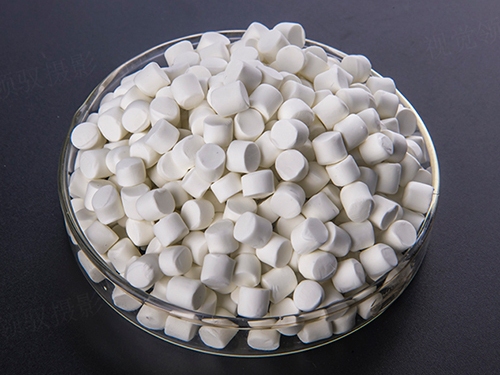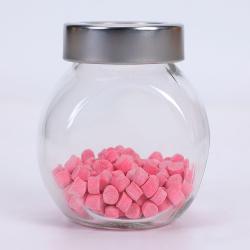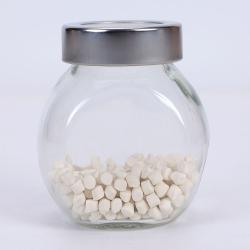What is Anti-Scorching Agent
An anti‑scorching agent (also known as a scorch retarder or vulcanization inhibitor) is a chemical additive incorporated into rubber formulations to postpone the beginning of crosslink formation during the initial heat‑up phase.
By extending the “scorch time,” these agents:
-
Enhance processing safety—preventing lumps and irregular curing in extruders or molds.
-
Improve shelf life—maintaining homogeneity in stored unvulcanized compounds.
-
Ensure consistent quality—avoiding early gel formation that leads to defects.
Common industry terminology includes induction time extender, scorch delay agent, and processing safety additive—all pointing to the core function of controlling the crucial window between mixing and curing.
Origin of Anti‑Scorching Agent
The pursuit of scorch safety emerged alongside the evolution of rubber vulcanization in the late 19th and early 20th centuries. As rubber applications broadened—from vehicle tires to waterproof tarpaulins and industrial hoses—manufacturers grappled with inconsistent curing and “scorch blisters.”
-
Early developments (1920s–1940s): Simple amine derivatives were trialed to slow sulfur crosslinking.
-
Mid‑century breakthroughs: Introduction of mbth (3‑Methyl‑2‑benzothiazolinone hydrazone) and di‑ortho‑tolylguanidine (DOTG) provided more reliable scorch delay.
-
Modern refinements: Tailored sulfenamide and dithiocarbamate compounds now offer precise control over induction periods, even under escalated processing temperatures.
Each advancement aimed to balance fast vulcanization for throughput with adequate scorch safety during mixing and forming stages.
How Does Anti‑Scorching Agent Work
At its core, an anti‑scorching agent interferes with the early stages of sulfur crosslink formation. The mechanisms include:
-
Complexation with accelerators: Some retarders form temporary complexes with primary accelerators, decreasing their immediate reactivity until a higher temperature threshold is reached.
-
Radical scavenging: Certain compounds neutralize free radicals generated at lower temperatures, preventing premature chain coupling.
-
Thermal activation delay: Specialized agents require heat activation above a defined “scorch onset” point, ensuring full mixing before vulcanization begins.
By manipulating these pathways, formulators can achieve a controlled induction time (measured as the time to a specified increase in torque or viscosity), often extending it from mere seconds to several minutes—crucial for large‑scale sheet or extrusion operations.
Purpose of Using It in Rubber Compound
Incorporating anti‑scorching agents into a rubber compound serves multiple strategic objectives:
-
Process Flexibility: Longer scorch times allow for complex mould filling, multi‑layer constructions, and longer transport distances between mixers and curing presses.
-
Quality Consistency: By preventing localized early curing (scorch spots), the final product exhibits uniform mechanical properties, appearance, and dimensional accuracy.
-
Operational Safety: Minimizing the risk of die build‑up reduces unplanned downtime and cleaning cycles, boosting overall equipment effectiveness (OEE).
-
Inventory Stability: Uncured rubber stocks maintain a consistent viscosity profile over weeks of storage, reducing waste and rework.
Whether producing automotive seals, PVC‑coated fabrics, or industrial hoses, anti‑scorching agents underpin reliable manufacturing workflows and high‑performance end products.
Category of Anti‑Scorching Agent
Anti‑scorching agents can be broadly classified based on their chemical structure and mode of action:
| Category | Examples | Key Features |
| Sulfenamide‑Based Retarders | N‑cyclohexyl‑2‑benzothiazolesulfenamide | Delayed activation; sharp scorch onset |
| Dithiocarbamate Retarders | Zinc diethyldithiocarbamate | Dual accelerator/retarder functionality |
| Hydrazide & Hydrazone Compounds | MBT (3‑Methyl‑2‑benzothiazolinone hydrazone) | Strong radical scavengers; broad temp range |
| Phenylenediamine Derivatives | IPPD (N‑isopropyl‑N’‑phenyl‑p‑phenylenediamine) | Also acts as antioxidant |
| Urea & Thiourea Retarders | Diphenylthiourea | Cost‑effective; moderate delay times |
Selecting the optimal category depends on the rubber type (NR, SBR, EPDM, NBR), processing temperature, mixing equipment, and desired scorch safety margin. By fine‑tuning the choice and concentration—often in synergy with primary accelerators—compounds can achieve precise scorch profiles tailor‑made for any application.
Here in Beihua, we have 2 different anti‑scorching agents, CTP(PVI)-80 and E-80.
 cwc@jxbh-masterbatch.com
cwc@jxbh-masterbatch.com Jiaxing Beihua Polymer Auxiliaries Co, Ltd. / Shanghai Crystal Wells Chemical New Materials Co.
Jiaxing Beihua Polymer Auxiliaries Co, Ltd. / Shanghai Crystal Wells Chemical New Materials Co.



































